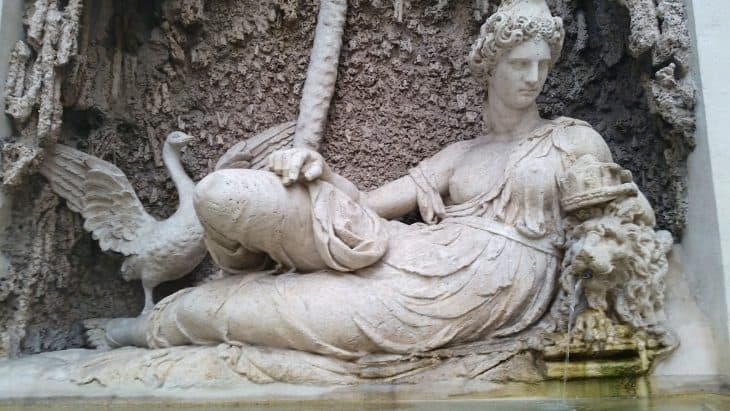
To devoted followers, she was a faithful wife and nurturing mother. To the rest, she was an evil goddess and a vengeful wife. No matter how you see her, Hera was the queen and chief goddess of Mount Olympus. Hera is the goddess of marriage and childbirth, which is ironic considering her husband Zeus repeatedly cheated on her and she killed many of his bastards. Though known for such horrible things, Hera remained loyal to her husband. She had worshippers all over Greece, but Hera’s main temples were built in Argos, Sparta, and Mycenae. Roman mythology worshipped her as Juno and as Uni in Etruscan mythology. Let’s get started with these 70 facts about Hera, the Queen Goddess of Olympus!
- Hera is one of the six children of Cronos and Rhea.
- Her honeymoon with Zeus lasted for 300 years.
- Two of her ten children were from her union with Zeus.
- Hera was one of the three goddesses Paris had to choose from for the fairest award.
- There are two important temples for the goddess: the Argive Heraion and the Temple of Hera.
- Juno is her Roman counterpart.
- She is the patron goddess of the city of Argos.
- Hera is the goddess of marriage and childbirth.
- She is also the wife and sister of the god of thunder, Zeus.
- This also makes her the Queen of Olympus.
- The Great Lady is one of her titles.
- The goddess annually renews her virginity.
- She punished her husband’s lovers by turning them into animals.
- Her anger and jealousy terrified her husband.
- The goddess was kind, despite her reputation of being a jealous wife.
- The Percy Jackson series portrayed her as someone who hates demigods.
- Hera sent the snakes that baby Heracles strangled.
- She coaxed Zeus to switch sides or remain neutral during the Trojan War.
- The god of thunder never liked Ares, his eldest son with Hera.
- Polos, a crown for great goddesses, crowned Hera’s statue.
Was this page helpful?
Our commitment to delivering trustworthy and engaging content is at the heart of what we do. Each fact on our site is contributed by real users like you, bringing a wealth of diverse insights and information. To ensure the highest standards of accuracy and reliability, our dedicated editors meticulously review each submission. This process guarantees that the facts we share are not only fascinating but also credible. Trust in our commitment to quality and authenticity as you explore and learn with us.


